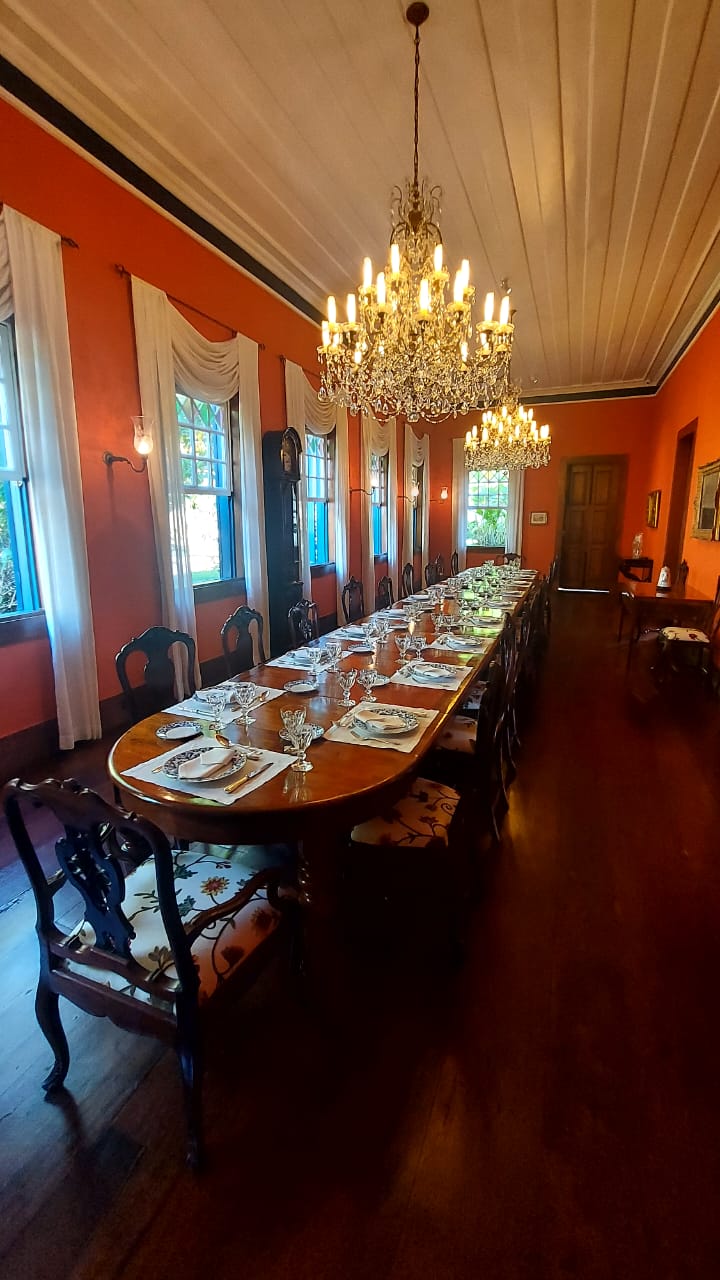Alinto Coelho’s Journey Through Heritage Homes Of Goa And Brazil
Goa’s heritage homes stand as epitomes of the architectural prowess of local artisans. Behind closed doors, hidden from view, the oratorio or altar, sometimes a room, brings families together during prayers. In mansions with a chapel, masses or family feasts were often held for the community.
Civil Engineer Alinto Coelho, an avid chronicler of Goan homes, uncovered the beauty of these sacred spaces in a recent paper presentation at the International Colloquium of the research project in Brazil — ‘The Manor House in Portugal, Brazil, and Goa’. He was the first Goan to join 42 other international delegates to showcase various aspects of the ‘Interiors Anatomy’ in Vassouras, Rio de Janeiro.
Vassouras, a former coffee estate, is a former Portuguese colonial Brazilian town with sprawling properties that run for more than 100 acres. Coelho states, “What’s noticeable are the grandiose mansion houses, larger than our Goan homes. After coffee production stopped, the owners converted these into museums, restaurants, and homestays.”
Sacred findings
Coelho’s presentation on the sacred spaces in the homes resulted from his extensive ground research on Goan houses. With first-hand knowledge, he highlights the altars and chapels of 10 houses in Brazil. He points out the difference between a capela and an oratorio. The main distinction is the celebration of mass for the public in a capela. An altar, however, ornate or artistic was meant only for prayers, he explains. The Vatican Council II decree changed everything. According to the decree, if you enter the home to visit the chapel, you can’t have a mass for the public.
Due to the decree, the Braganza Pereira house in Chandor can no longer host a public mass, although regular masses continued till 1965. The Fernandes house in Sernabatim and the Loyola convent house in Orlim can still hold masses since they have separate entrances.
Certain commonalities in all altars or chapels included a family patron and in a few cases relics. Coelho cites the example of the Antao house that had a relic of the wood of the cross and the Braganza Pereira has the fingernail of St. Francis Xavier. Some families also celebrate the feast of the patron saint. The Ozario Santana house in Arossim commemorates the feast of St. Anthony in a big way and has a unique painting of St. Anthony cradling baby Jesus.

Discovering Brazil
Coelho’s ongoing documentation of Goan homes, often mistakenly called ‘Goan Portuguese’ homes, covers 180 Christian and Hindu homes. On his trip to Brazil, he found no similarities between the domestic architecture of the former Portuguese colonies and except the use of locally available raw materials in buildings.
“Though both used local construction materials, the rest stood out. Goa utilised laterite stones, wood like jackfruit, rosewood and teak for furniture. Brazil used the abundance of timber in building their homes — 30% more than Goa. Boulders, bricks, and country tiles for roofs were additional materials used.

One significant observation from his visit to Brazil is their appreciation for heritage. “They have taken measures to preserve the homes. Many turned their houses into a museum. A homeowner, who happened to be a Coelho, is a collector of sacred art. He has life-size statues of St Anne and angels,” he says. The house tour includes a meal as well. “It’s one way to raise funds for the upkeep.”
The owners, he found, were well-acquainted with all the details about the houses. They carefully documented everything — from old house plans, and renovation, to other information.
Another sizeable boost for preservation comes from numerous organisations, such as the Manor House research funded by the Fundacao Casa de Rui Barbosa. Rui Barbosa was a noted historian. After he passed away, his house was converted into a research centre for preservation and historical research.

How it began
It began last year during the seventh colloquium in Goa when Coelho assisted the delegates in gaining access to some houses. “Soon after, they asked me if I would be keen to present at the eighth edition in Brazil. I worked on the approved subject,” he said.
Currently, he is working with a team of researchers including Dr Helder Carita, author of the book on Goan Homes Palaces de Goa, Joaquin dos Santos, and Amita Kanekar to document Goan Hindu houses. He will present another paper at the next colloquium in the Azores, Portugal in 2025.
Coelho’s journey with heritage restoration began in 2001 with the Costa Frias house in Candolim. He’s worked on many projects since. Coelho says he would call the owners to request permission to document the homes. With renewed interest in showcasing the beauty and grandeur of the past, Coelho has opened the doors to new conversations around the subject.
Images are for reference only.Images and contents gathered automatic from google or 3rd party sources.All rights on the images and contents are with their legal original owners.


Comments are closed, but trackbacks and pingbacks are open.